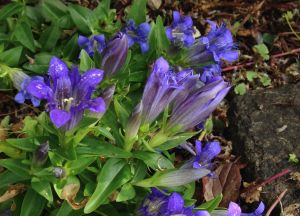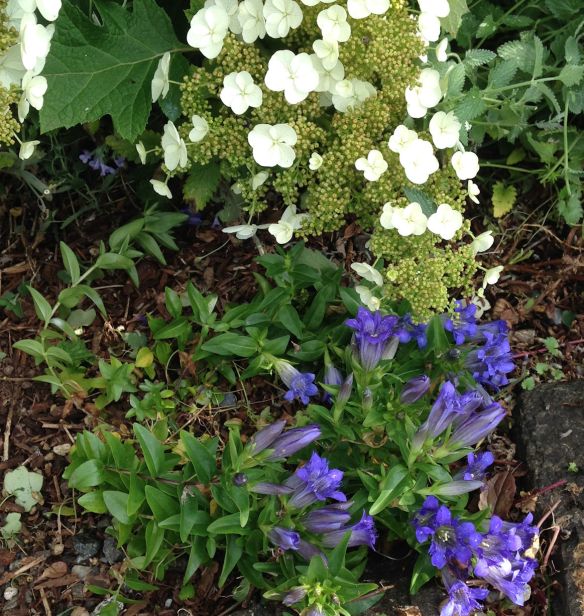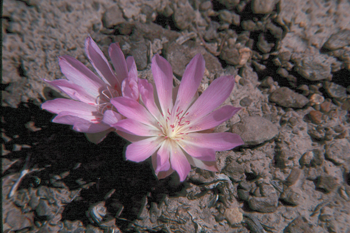Blue is the color between violet and green on the optical spectrum of visible light. I love having blue plants in the garden, probably because of my tendency to red-green color blindness. To my eye, and unlike some reddish hues surrounded by green (especially at a distance), blue stands out.

Gentiana septemfida var. lagodechiana ‘Select’
Most of the flowers in the genus Gentiana are blue. This large genus (around 400 species) is known especially for its blue, trumpet shaped flowers.
My plant was purchased from Edelweiss Perennials, a small family run mail-order nursery located in the heart of the Willamette Valley, in Canby, Oregon. This alpine gentian is a great little plant for the rock garden or front of a border. It’s easy to grow, thrives in all kinds of soil and (unlike many alpines) doesn’t seem to mind our wet rainy winters here in the lowlands of the Pacific Northwest.
I planted it in front of Hydrangea quercifolia ‘Sike’s Dwarf’,which is known for foliage and blooms that extend all the way to the ground.
 The following plant description is courtesy of Hill Farm Nursery located north of McLeese Lake in British Columbia, Canada.
The following plant description is courtesy of Hill Farm Nursery located north of McLeese Lake in British Columbia, Canada.
- Gentiana septemfida var. lagodechiana ‘Select’. CRESTED GENTIAN, SUMMER GENTIAN. Perennial. Zone 3. Caucasus Mountains, alpine regions of Iran, Iraq, Turkey. This selected variety is originally from the Lagodekhi region of the Republic of Georgia (former U.S.S.R.). A beautiful and encouragingly easy alpine, which is also known as the “everyman’s gentian” because of its wide tolerance to various growing conditions. Low growing, slightly sprawling clumps of 6-inch stems are starred in summer by many clusters of rich blue flowers with white and purple highlights. Close examination reveals a cluster of intricate hairs and speckles within the trumpet throats of each small bloom. Prefers a bit of shade in hot summer regions, average soil and moisture.







